Oh! Nuts ◊ Bulk Nuts & Seeds ◊ Bulk Sunflower Seeds
Bulk Sunflower Seeds
Browse our complete selection of Bulk Sunflower Seeds
|
||||
 | ||||
 | ||||
 | ||||
SUNFLOWER SEEDS
When and where did sunflowers first grow in the United States?
The southwestern part of the continental states was probably the first place where sunflowers grew in the U.S. This area includes Colorado, New Mexico, Arizona and southern California. Sunflowers were very popular with the American Indian, though they were unknown to Europeans until the 1500’s. Some Indian tribes cultivated sunflowers a long time ago, especially the single-stemmed variety, which were also observed in eastern Canada in the seventeenth century. For many centuries, though, sunflowers grew wild and their seeds were gathered for food. The Indians also roasted sunflower seeds, grinding them into a fine flour from which they baked cakes and mush.
Where did sunflowers originate in the world at large?
Peru is erroneously regarded as having been the original home of the sunflower, but this is not substantiated by hard evidence. It was, in fact, the North American Indian who domesticated the sunflower. By domestication we refer to the cultivation of a specific type, and in the case of the sunflower, the domesticated variety is very different from its wild ancestor.
What uses did the Indians find for the sunflower?
The sunflower played a significant role in Indian tribal medicine, as a cure for rattlesnake bites, a remedy for pulmonary afflictions, and a soothing agent for chest pains. The sticky juice of freshly crushed sunflower stems was smeared on wounds to prevent infection. Sunflowers were also the source of yellow and purple dyes, which the Indians used for body painting as well as for coloring textiles and baskets.
When and how were sunflowers introduced into Europe and beyond?
Apparently it was through their colonies in the New World, that France and England first laid eyes upon the sunflower. The Mexicans introduced it to Spain in the 16th century. At first it was regarded only with mild interest, as an ornamental flower in gardens. However, as it spread eastward to Italy, Egypt, India, Russia and China, experiments were conducted, whereby various parts of the plant were tested. Oil was expressed from the seed, the seed was eaten or it was roasted and ground into a coffee substitute, and various other uses were found for other parts of the sunflower, though none of them caught on in a big way.
In Turkey and Persia some medicinal uses were found for the sunflower: it was mixed with wine and thought to cure fevers. In China the seeds were given to sufferers of dysentery, in Brazil sunflowers were used to treat asthma, and in Cuba to provide relief from the common cold. Sunflower seeds were also found to be effective as a diuretic and expectorant.
To which botanical family does the sunflower belong, and what are its varieties?
Sunflowers belong to the huge composite family of flowering plants. Most members of the composite family are not cultivated. Of those that are, the most common are: safflower, lettuce, tarragon spice and chicory; and ornamental plants such as chrysanthemum, dahlia, marigold and zinnia. Certain obnoxious weeds, such as goldenrod, dandelion and ragweed, are also members of this family.
Basically there are three varieties of the sunflower: the wild, the weed, and the cultivated. The wild sunflower grows extensively in the western United States, measuring 3-5 feet in height. It is branched, with several small heads, scanty ray flowers and very small seeds. The weed sunflower grows in the midwestern United States in vacant lots, railroad yards and along roadsides. It is taller and branched, with large flower heads and more numerous ray flowers. It produces somewhat larger seeds than the wild sunflower does, but it is the cultivated sunflower that produces the largest seeds. The cultivated form is unbranched, usually with only a single, massive flower head, and with numerous ray flowers.
How are sunflowers grown today?
Sunflowers are propagated from seed. They come in two types: oilseed and non-oilseed. The small, black seeds of the oilseed varieties produce vegetable oil and high-protein meal. The non-oilseed varieties are used for human food and birdfeed, having larger seeds with black/white or black/gray stripes. Russia has contributed much to the development of high-yielding, disease-resistant varieties, with increasingly higher oil content.
What are the optimal requirements for successfully growing sunflowers?
Sunflowers require – after all – a sunny climate! They thrive in open sunlight, but they can tolerate cold and hot temperatures, too. Sunflowers are quite resistant to drought and frost, and grow just as well in poorer quality soil. They are, however, susceptible to hailstorm damage because of their large, heavy heads.
The seedbed should be free of weeds prior to planting, and fertilizer may be applied in advance. Seed is placed in the earth 1 or 2 inches deep, with 20 to 40 inches between the rows. Weeds may be eliminated with herbicides. Sunflowers are usually not grown in the same field year after year, but are rotated with corn and wheat, crops which do not support pathogens that cause sunflower disease.
What locations are best avoided when growing sunflowers?
Birds are a great nuisance for sunflower growers. Blackbirds, in particular, love to eat the seeds during the growth season, while some other birds enjoy the immature seed. Sunflower seeds are so easy for the birds to access, and no amount of repelling devices are successful in discouraging the birds. Noisemakers and scarecrows sometimes do help, but the best advice is to avoid locating sunflower fields near the roosting places of birds.
How are sunflowers bred?
In order to assure maximum yield and uniform crop commercial growers must purchase hybrid seed from seed companies. Plants must be grown in isolation at least ½ mile from other wild or cultivated sunflowers. This acts as a buffer to minimize the risk of insects bringing unwanted pollen. In the U.S. certified seed may be obtained in Minnesota, North Dakota and California. Wild sunflower species are of great help to sunflower breeders, because they vastly improve the productivity of the hybrid plant.
When and how are sunflowers harvested?
Sunflowers are ready to be harvested when most flowers face eastward and their backs change from green to yellow. In the past sunflower heads were harvested by hand, then dried and threshed. Today they are harvested by combines, which shake the seeds loose from the heads and guide the stalks into cutting blades. It is necessary to dry the seeds in order to reduce their water content.
What does a sunflower plant yield?
In the U.S. an acre can produces about one thousand pounds of sunflower seeds. 100 pounds of sunflower seeds may yield approximately 40 lbs. of oil, 35 lbs. of meal and 20 lbs of hulls.
Oil: Oilseed and non oilseed varieties are similar in seed characteristics, but different in seed size and oil content. Sunflower oil is used mainly for salad and cooking oil, margarine and shortening. It is considered a healthy type of oil, ranking second in importance after soybean oil.
Meal: Sunflower meal is the by-product of crushing the seed for oil extraction. It is used in animal feed, and with its high protein content it is a valuable supplement for cattle and sheep.
Hulling material: The hulls of sunflower seeds are ground and added to livestock feed to add roughage and bulk. In other countries they are also used as fuel to generate steam, and they can be made into fireplace logs and fiberboard.
What is the difference in the uses of various seed sizes?
When sunflower seeds are used for oil, seed size does not matter. But in the confectionery line, it does. The largest seeds, representing about 15-25% of the harvest, are sold unhulled to nut processors to be salted. Medium sized seeds, about 40-60% of the non-oilseed crop, are hulled, cleaned and sorted, after which they are sold as snacks and to be used as a nut substitute in baked products and candies. Sunflower seeds are a crunchy health-food item, and are also popular as an addition to salads. The smallest seeds, which make up the remaining 15-20% of the non-oilseed crop, are sold unhulled as birdfeed, both pure or in blends with other grains. Many caged birds love it, and it is also used to feed wild birds and seed-eating pets.
How does oilseed differ from non-oilseed in the marketplace?
The main difference is that oilseed plays a major role in foreign trade. Of the almost two million metric tons of sunflower seeds that were produced in the U.S. in one year, a million and a half tons were exported. On the other hand, non-oilseed sunflower seeds are mostly consumed domestically.
The future of sunflowers
In 1970 several thousand acres of land in the United States were planted with sunflowers; within a number of years this figure grew to about 4 million acres. As a snack food, sunflower seeds are unique in that they are highly nutritious and comparatively inexpensive. Additionally, sunflower meal has become a major ingredient in concentrated food that is being provided to poorer nations of the world. Thus, sunflowers are headed for a bright future.

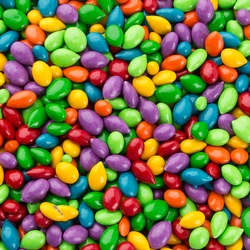
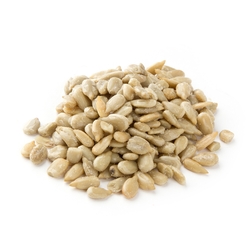



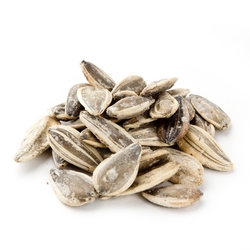
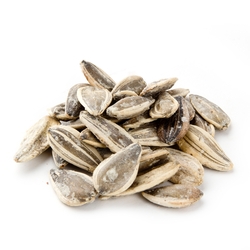
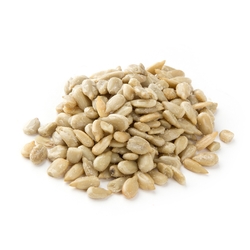
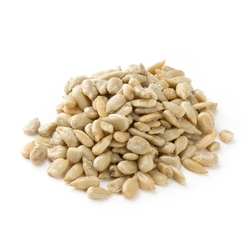
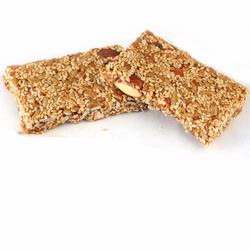
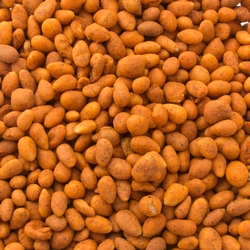
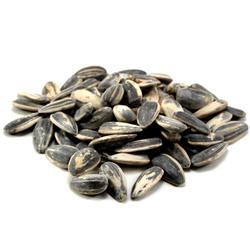
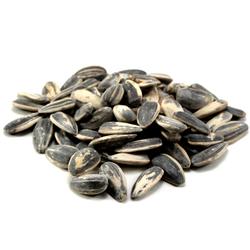
 or
or 
